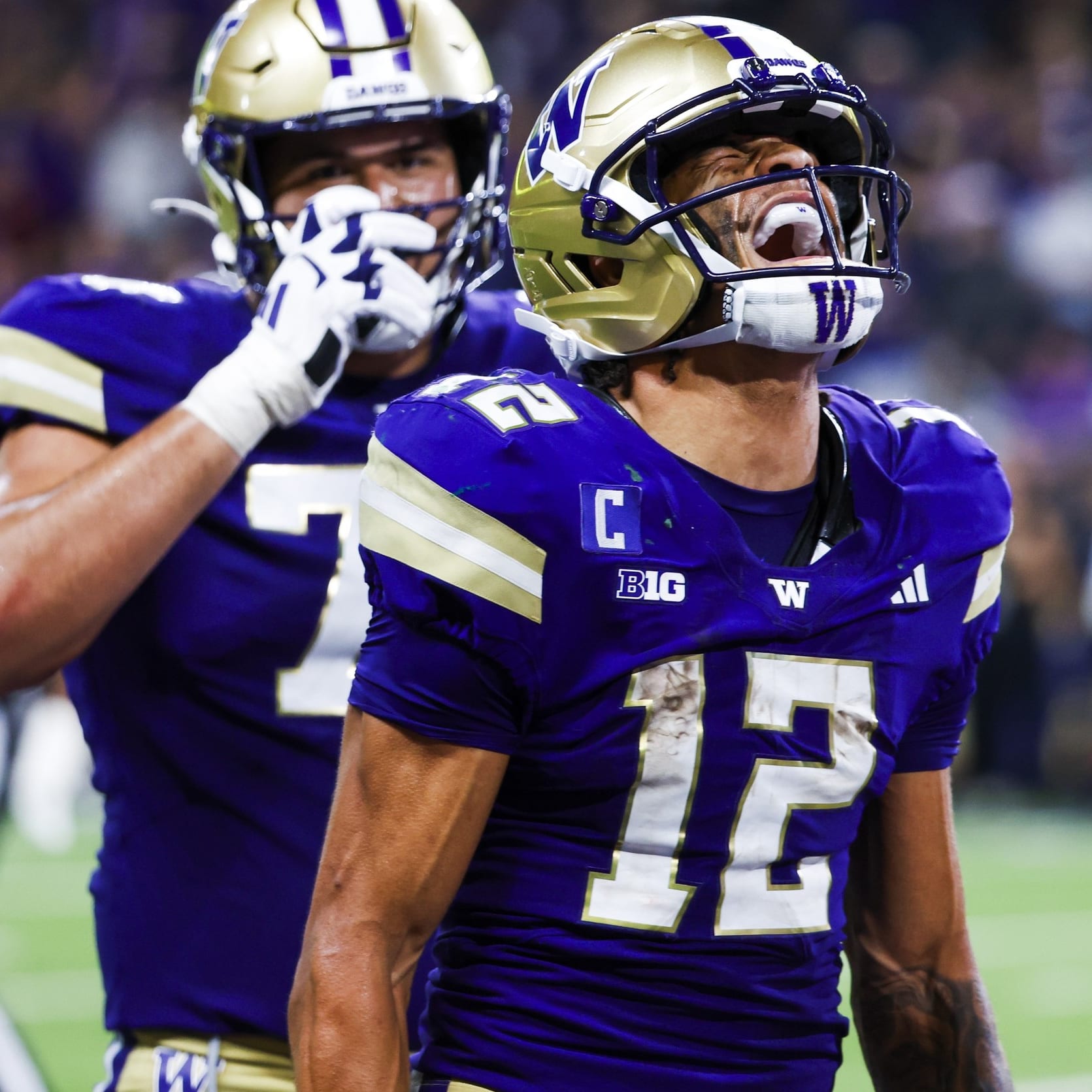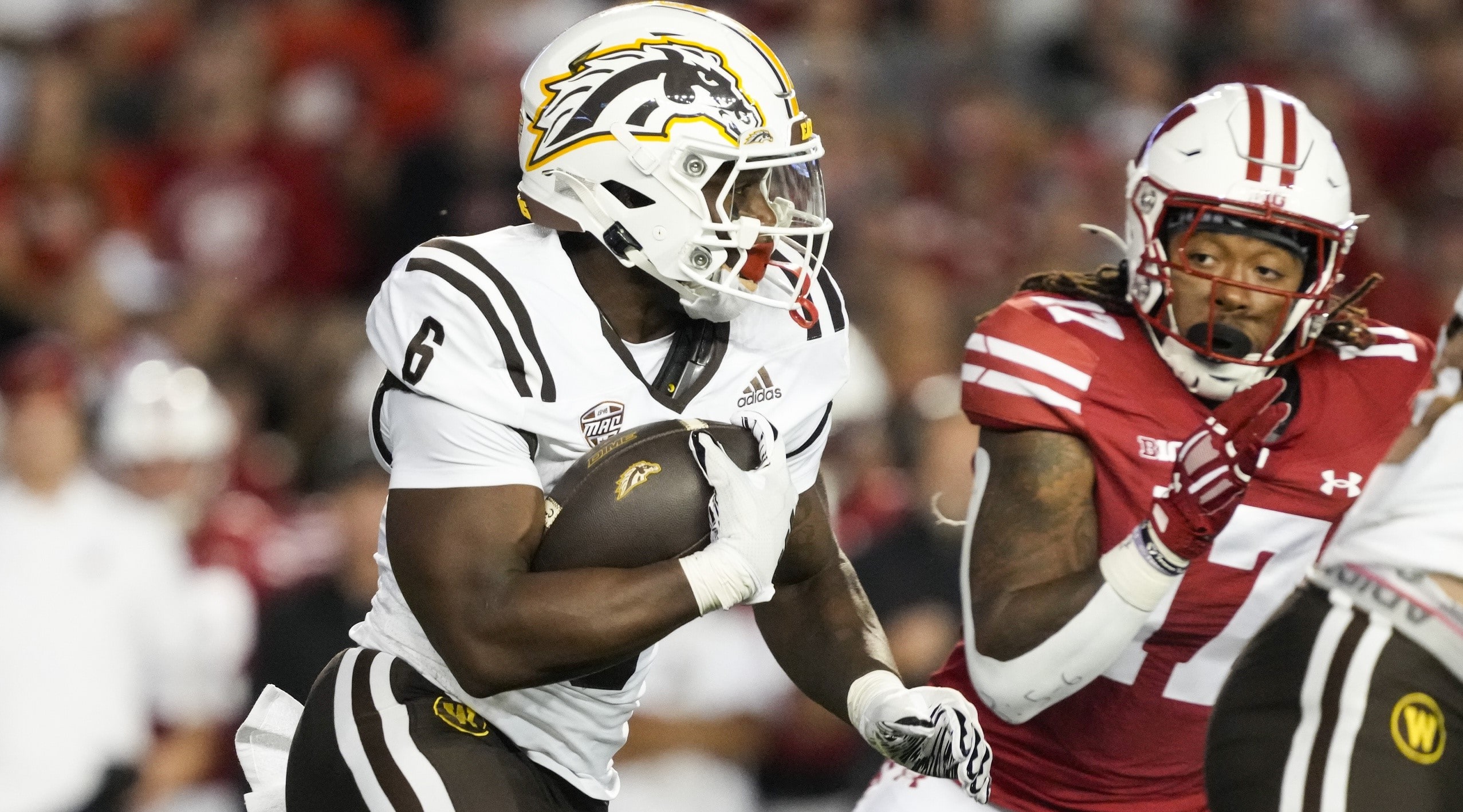Conference realignment has been one of the most controversial topics in college sports over the last few years. Playing conference games regionally does make sense logistically, and there are of course all the historical factors of rivalries, which really makes college sports special. As is the case with most things in this world, however, money talks. TV deals are negotiated with the conferences, and some of them are better than others. The Big 10 has a seven-year, $7 billion deal that takes effect this fall that will pay its member schools $80-100 million per year, while the Pac-12's TV deal expires after this coming season and no progress has been made on a new one, which has lead to pure chaos around the country. It was announced last year that both USC and UCLA would leave the Pac-12 after the 2023-24 season to join the Big Ten, while in recent weeks Oregon and Washington both decided to bolt to the Big Ten as well. To make matters worse for the Pac-12, Colorado, Arizona, Arizona State and Utah all have agreed to terms to join the Big 12 after the 2023-24 season. That leaves just Stanford, California, Oregon Stat and Washington State remaining after the expiration of this current TV deal, but other conferences like the ACC have been contemplating going after a couple of those schools.
So where do we go from here? Well, it's not an easy answer. The "Power 5" conferences hold all the power, no pun intended, in the sport because of those massive TV deals. With the likely demise of the Pac-12, if the Big Ten, SEC, Big 12 and ACC all wanted to break away from the NCAA and create their own league, there would be nothing to do to stop it. That being said, I don't see that happening. There was a point in time when the NCAA was not on the greatest terms with the Power 5 conferences, but the NCAA has realized the position they are in and decided to give those bigger conferences more of a say in what happens. One example is the new 12-team College Football Playoff model that will take effect starting in the 2024-25 season. The champion of each Power 5 conference is now guaranteed to make the College Football Playoff, along with the top Group of 5 conference champion, which will be from either the American Athletic Conference, Conference USA, Mid-American Conference, Mountain West Conference, or Sun Belt Conference. The last six spots revert back to the highest-ranked non-champion schools. Each conference also receives millions of dollars from the NCAA for each member team that is selected for the College Football Playoff. With six at-large spots in the 12-team model, it's easy to see how the bigger conferences are going to be excited about this agreement. It was always such a big deal when one conference got two teams into the current four-team College Football Playoff model like last season when the Big 10 sent Michigan and Ohio State.
With Super Conferences becoming more of the norm, let's break down what the college football landscape could look like in 10 years.
ACC Teams and Others Move to Super Conferences of Big Ten, SEC and Big 12
At the start of the 2024 college football season, there are slated to be 18 teams in the Big Ten, 16 teams in the SEC, 16 teams in the Big 12 and 14 teams in the ACC. The reason there hasn't been a mass exodus in the ACC like we've seen in the Pac-12 is that the teams are stuck in a massive 20-year TV deal that goes until the 2035-36 season, and it would cost the teams a lot of money to get out of it now. 5-10 years down the road that could certainly be a different story and well worth the exit fee. I see a scenario in which the 14 ACC schools and four remaining Pac-12 schools merge with the top three conferences along with four other high-level football programs like Notre Dame, Boise State, San Diego State and Memphis to create three 24-team super conferences of 72 total teams.
Three 8-team Divisions for each Super Conference
The Big Ten, SEC and Big 12 will each split into three divisions with eight teams each. You will play all seven other teams in your division each year. Each team will then play the team from each of the other two divisions that finished in the same positions in the standings as them last year. So the best team from division A last year will play the best team in division B and division C the previous year. That will make up each team's nine-game conference slate for the regular season. That leads us to...
Conference Tournaments
Conference tournaments weren't really thought to be possible in football, but they exist in many other college sports. With the amount of money in college football, more games will always be a talking point and something that can be very financially beneficial for conferences and universities. My idea is that the top two teams in each of the divisions will make the conference tournament (six-team tournament). The best two records in the conference will receive a bye for the opening week of the conference tournament and will automatically advance to the College Football Playoff. The No. 3 seed will play host to the No. 6 seed, while the No. 4 hosts the No. 5 seed to determine who reaches the semifinals of the conference tournament. The No. 1 seed then hosts the lowest-seeded team, while the No. 2 will host the highest-seeded team in the semifinals. The winners of the semifinal games will both lock up a berth in the CFB Playoff and then play a league championship game on a neutral field. The winner will then receive a bye for the opening round of the CFB Playoff.
Merging of Group of 5 (4) Teams
With 72 teams in the top three conferences, that would leave 60 remaining D-1 teams amongst what has commonly been known as Group of 5. While they can stay in separate small conferences as is -- at least in college football -- they would all be stronger together. None of these teams really have the same kind of brand as a bunch of schools in the Big Ten, SEC or Big 12, but they can still be a powerful force together that could show the world they can still compete on the national stage. In my idea, those 60 teams would be split up into four divisions with 15 teams each and become known as The Group of 4. Those teams would play 11 total conference games, eight against your own division and one against each of the other three divisions based on your position in the standings last season. The team with the best record in each division would then go to a four-team Group of 4 conference tournament to decide the league champion. The No. 1 seed will play the No. 4 seed and the No. 2 seed will play the No. 3 seed, but all games will be held on a neutral field. The winner of the two semifinal matchups will advance the College Football Playoff. The Group of 4 champions will also receive a bye for the opening round of the CFB Playoff.
College Football Playoff Format
The College Football Playoff will remain 12 teams, with eight spots already claimed through the conference tournaments by the Big Ten, SEC, Big 12 and Group of 4. Each of those conferences would also have one team guaranteed to make it to the second weekend (quarterfinals). The remaining four teams in the College Football Playoff will be the four highest-ranked teams that did not make the conference championship game. This ensures that the best conference that year can get the most teams in the playoff and a team can't be hurt too significantly by playing a really tough schedule. Those last four teams added to the CFB Playoff will play road games against the four conference championship game losers in the first round. The first-round winners will then be reseeded and matched up against the four conference champions. So the best team in the country is going to play the worst team remaining in the quarterfinals. The New Year's Six Bowls (Fiesta, Peach, Rose, Sugar, Orange, Cotton) will then make up all the quarterfinals and semifinals games (four for quarterfinals and two for semifinals). The winner of the No. 1 vs No. 8 seed will take on the winner of No. 4 vs. No. 5, while the winner of No. 2 vs No. 7 will take on the winner of No. 3 vs. No. 6 in the semifinals. The National Championship Game will take place on the Saturday of NFL Championship weekend.
Fun Non-Conference Battles
The Big Ten, SEC and Big 12 will all play 9 conference games and three non-conference games to make up its regular season slate. Each super conference team will play one team from each of the other two super conferences and one team from the Group of 4. Interleague play would be the first three weekends of the regular season for all three super conferences. The first-place team in the Big Ten from the previous season's standings will face the first-place team in the SEC and Big 12, while the worst record in the Big Ten from the previous season will play the worst record in the SEC and Big 12. The Group of 4 scheduling requirement for the top three conferences over those first three weekends will be decided by each of the teams as to who they want to play. It would incentivize super conference teams to target higher-level Group of 4 teams, as a win could be used if one of those teams needed one of the four CFP wildcard spots based on the rankings.
College Football Playoff Rankings
Speaking of rankings, this would continue as it is known now. A committee would get together and rank the Top 25 teams beginning at Week 10. This would allow a wide range of data to be considered before the rankings begin and then give teams an idea of their position and how they are thought about by the committee. The final College Football Playoff Rankings would not only determine the final four teams to make the playoffs but also be responsible for properly seeding teams in the playoff. The Big Ten, SEC, Big 12 and Group of 4 champions would be seeded from highest to lowest in the ranking, as would the four championship-losing teams that host the first-round games.
Scheduling Timeline
So if you are doing the math on this, every D-1 team will play 12 regular season games and have one scheduled bye week. That makes up a 13-week regular season. Everyone will play their first game of the season on Labor Day weekend. Everyone will also play their last game of the regular season on Thanksgiving weekend. The next three weekends will be reserved for conference tournaments to conclude (Group of 4 teams will have an extra week off because there are only two rounds). No games will be scheduled for Christmas weekend. The opening round of the CFB Playoff will begin on New Year's weekend with one game on Friday and three on Saturday to not conflict with the NFL. The same schedule will be used for the quarterfinal games, which will be during the final week of the NFL season. The two semifinal matchups will be on Friday to not conflict with NFL Wild Card weekend. There will then be a week off for the two championship teams, and then the CFP National Championship will be played on the Saturday of NFL Championship weekend before the two conference championship games on Sunday.
Relegation
Saved perhaps the most controversial of my ideas for last. Stakes are always what make sports interesting to viewers. We know about the thrill of winning a conference or national championship in college football, but could you imagine the other end of the spectrum? My idea is that the two super conference teams with the worst records will be relegated to the Group of 4, while the two Group of 4 teams that make the CFP will take the spots vacated in the super conferences for the following season. This will make every single regular season game matter. You have the fight to make the playoffs, but you also have the fight to not be the worst to monitor throughout the season. I'm envisioning a game on Thanksgiving weekend that could determine whether or not a team gets moved down to the Group of 4. The pressure and stakes of that game would arguably be just as much as a national championship because the revenue share for a team in the Group of 4 vs. a team in one of these super conferences is very significant.
It should be a privilege for a school to be able to play in one of these conferences that in say 10 years' time could renegotiate a TV deal worth upwards of $30 billion if this super conference idea comes to fruition. I think the Group of 4 merging together could tighten the gap a little bit in regard to TV deals, but that difference is still going to be quite a bit for a team that gets relegated. Now the teams that get relegated would still have a solid chance to return the following season by making it to the Group of 4 championship game and CFP by association, but it could be life-changing for the schools that get promoted and can possibly sustain a spot in those Top 72 teams for years. Football already finances most of the other sports for those smaller programs, so getting a giant increase in annual revenue through promotion would be massive for the whole university.
Why This Would Work
There is so much money already in college football, and it is not going to stop going up anytime soon. As much as the arguments for how something as drastic as this could affect other sports have merits, the bottom line is that if the universities can bring in exponentially more money by doing a model like this, it is going to be done with little regard for how it affects the other college sports. If we close the lens to just college football, this model would be very fair across the board. Parity is something that college football has lacked for decades and with the way the scheduling works out, teams are now going to be punching at their weight class and have a brilliant chance to move up into the upper echelon of the sport by winning against relative competition. There are also penalties for those teams fortunate to have the branding to begin in the super conference if they don't perform. I think there are parts of both the NFL and English Premier League that are apparent in this proposed model and should be considered to make college football as competitive and entertaining as possible. People don't like change, but conference realignment is happening and not going to stop until something like this is proposed to better distribute the wealth and give fair opportunities to schools that perform.














































